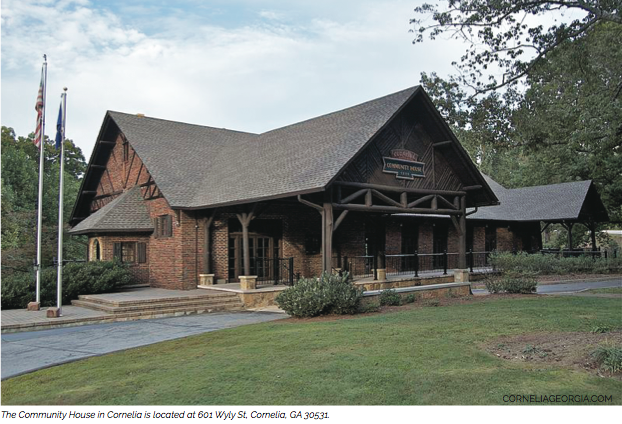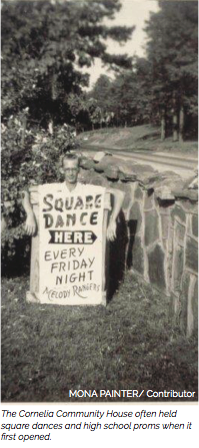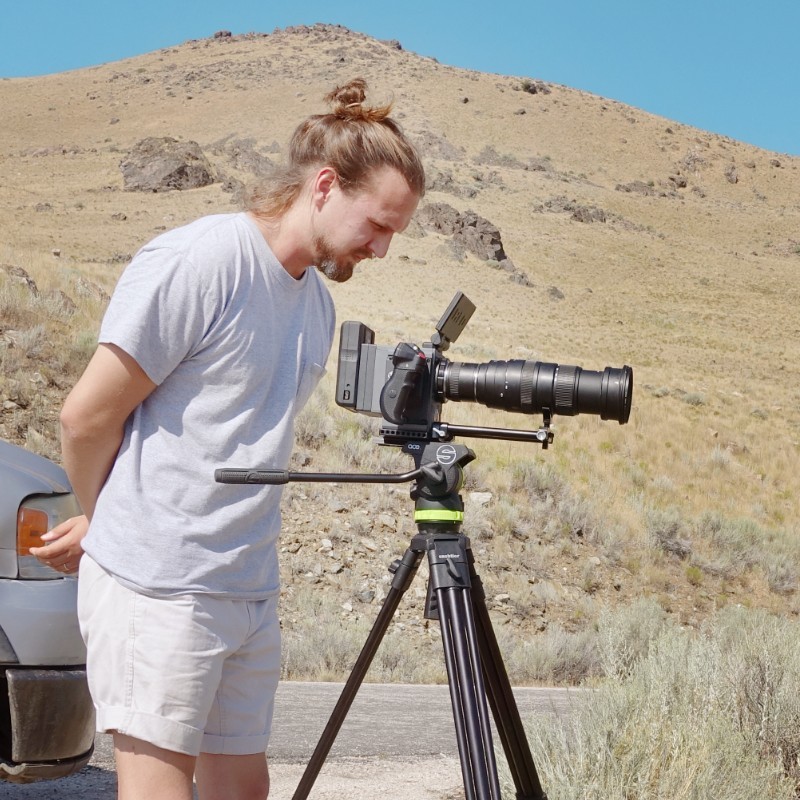
LAUREN BARTLETT
Features Editor
 Most students at Piedmont know that the city of Cornelia has parks, restaurants and a quaint environment. But, what some may not know is that a historical building resides very close to campus.
Most students at Piedmont know that the city of Cornelia has parks, restaurants and a quaint environment. But, what some may not know is that a historical building resides very close to campus.
The Cornelia Community House, which Piedmont has hosted its spring formal in past years, is a building that is located next to the Cornelia City Park.
“The Cornelia Community House is a beautiful building,” Community Development Manager for the City of Cornelia Jessie Owensby said. “We use it for events and weddings, and it has a lot of history here in Cornelia. It’s a very unique, one-of-a-kind aspect to our city, and we are honored to have it.”
The building is a two-story house that includes a ballroom on the top floor and a bottom floor with space for extra seating or private events.
When the house was built, it was constructed with local pine and stone from around the area. According to corneliageorgia.org, the Cornelia Community House was built by the Civilian Conservation Corps in 1936 and was listed on the National Register.
The building is also a part of the Tennessee Valley Authority, which was started by President Franklin D. Roosevelt, or FDR, when he created many government entities in order to create jobs during the Great Depression.
The Cornelia Community House was also a part of the New Deal.
According to history.com, FDR put the New Deal into place to help institute experimental projects that aimed to restore prosperity to Americans after the effects of the Great Depression.
According to history.com, on May 18, 1933, Roosevelt signed the Tennessee Valley Authority Act as part of the legislation that marked Roosevelt`s first 100 days in office.
The purpose of the Tennessee Valley Authority Act was to provide navigation, electricity generation and economic development to the Tennessee Valley, a region that was highly affected by the Great Depression.
According to the book, The First One Hundred Years, the Community House is unique because it has been the host of many school functions, high school dances, banquets and family reunions. During the times of WWII, weekly dances were held at the Cornelia Community House for the servicemen stationed at Camp Toccoa.
The Cornelia City Park is adjacent to the Cornelia Community House and includes walking trails, tennis and basketball courts, picnic tables and a play area for kids.
There is also a driving path in the park that is used more specifically in the Christmas season when the city offers its annual Christmas lights display.







